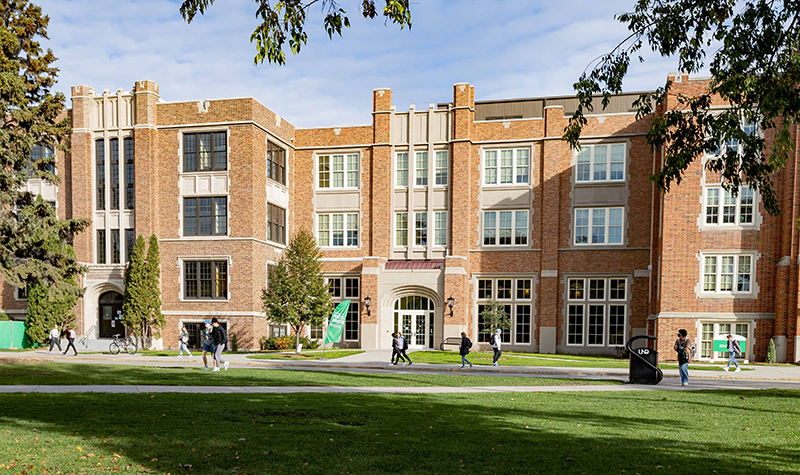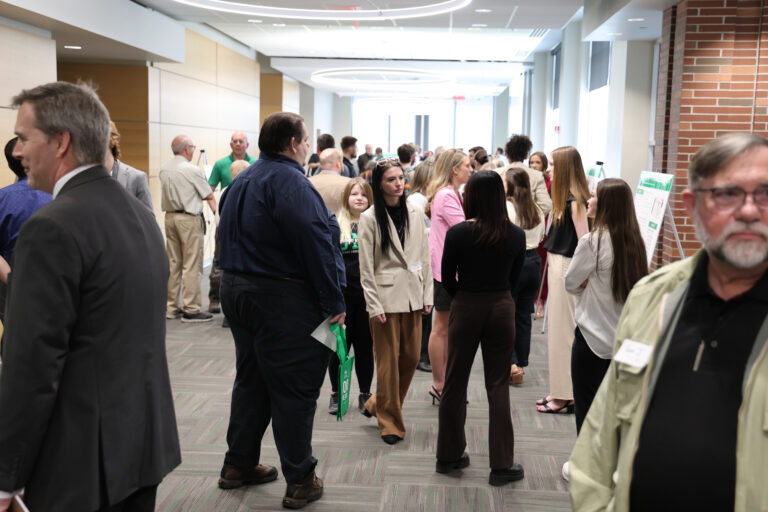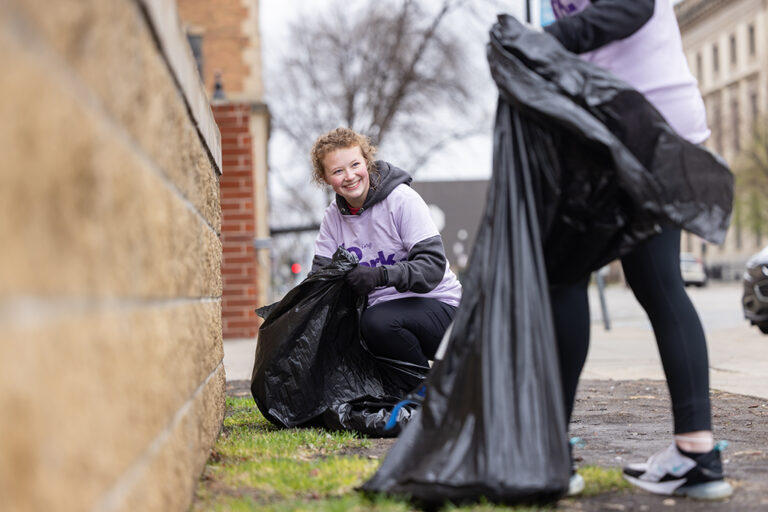Meeting the need for special educators
UND’s Special Education Resident Teacher Program delivers on-the-job learning for in-demand teaching careers

As the education workforce shortage deepens across North Dakota, particularly in areas of special education, the University of North Dakota is developing better ways to set aspiring teachers up for success.
Amy Jacobson, director of UND’s Special Education Resident Teacher Program, and her colleagues in the College of Education & Human Development have made changes to the long-running graduate program, making it more feasible than ever to keep working while earning a master’s degree at home, in a little more than a year.

Through the Special Education Resident Teacher Program, a subset of the special education master’s degree, students are able to teach full time while earning their degree.
Students receive a stipend, according to Jacobson, as well as scholarships to use toward tuition. Those enrolled in the program also receive one-on-one mentorship at both academic levels of the experience — at their schools where they’re teaching and at UND.
“It’s much different than a traditional student-teaching experience, because it’s a full academic year with full responsibilities,” Jacobson said. “And these resident teachers are assigned to public schools throughout the state.”
According to figures available from the North Dakota Department of Public Instruction, North Dakota schools report a dire need for special education teachers.
For example, some 13 of the state’s 31 special education units — which represent all public schools’ special education services — have 21 full-time positions that remain unfilled, the department reports. And the total number is likely much higher, because the other 18 special education units simply didn’t respond to the state’s fall 2021 survey, Jacobson said.
Jacobson acknowledged that through her 20-plus years in the profession, both in teaching and administration, there always has been a shortage of special education teachers.
“But now, more than ever, that shortage is critical,” she said. “That is true for all teachers, but special education is unlike any other teaching position.”
Better equipped through mentorship
Heidi Huseby has been a teacher for four years at Grand Forks Central High School, meaning she has first-hand experiences with the increasing demands of the job. She’s also someone who has benefitted from UND’s unique program.

Working alongside a handful of fellow special education teachers, Huseby spends most of her day with about 18 students, ranging from ninth to 12th grade. The range of disability areas, she said, varies just as greatly. Each student has an individual education plan, more commonly referred to as an IEP, which needs to be met in addition to their daily homework.
“Imagine a math class where you’re teaching one subject to 26 students,” Huseby said. “Then, imagine working with eight to 11 students, but they’re all working on different subjects. And not just different subjects, but every level of those subjects.”
This wide disparity of content — paired with the specific needs of each student enrolled in special education — creates a challenging environment, especially when the number of students goes up, but the number of available professionals can’t meet demand.
But Huseby’s better equipped than ever to meet those challenges, thanks to the specialized training and individualized attention she received in UND’s Resident Teacher Program.
Through the program’s funding, Huseby said she was able to get the best of both worlds — still earning a part-time wage while advancing her education and learning on the job.
“When you’re a working adult, raising kids, it can seem like you’re taking a big chance to go back to school,” Huseby said, reflecting on her path to a master’s degree in special education. “And to know that I had somebody in my back pocket the entire time, a mentor who was there for me, it took away the fear of not being successful.”
Tangible connections in teaching and learning
Indeed, Jacobson has steered the program toward meeting prospective graduate students wherever they are in life. It’s expected that people in education coming to UND for a master’s degree are likely working in the field, or have been for a number of years, she said.
The program has been taught fully online for more than 10 years and was one of the first programs on campus to offer online courses. All of the content is delivered asynchronously, so resident teachers are able to navigate their time outside the classroom in whatever way works best for them.
“A huge piece of it is the fact that what they’re learning in class can be applied the next day at work,” Jacobson said. “There’s a tangible connection between the learning and the teaching.”

But make no mistake, burning the candle at both ends, so to speak, requires a certain amount of determination. For her part, Huseby found the experience challenging and rewarding all at once. Now, she feels “truly blessed” to be a teacher to her students, helping them prepare for life after high school, she said.
“I would say 95 percent of what I learned through the program, I have applied,” said Huseby, referring to testing methods, knowledge of disability areas and other practices that she’s taken directly from UND’s classroom to her own at Grand Forks Central. “To me, that was a priority in going for an advanced degree. You want to make sure that the courses you’re taking are applicable.”
Brandon Vandervort, a fellow former UND resident teacher in Grand Forks, said the program’s benefits extend past mentees to the schools that host them. Partnering with UND provides schools with a chance to recruit and train their own special educators, he said.
Vandervort has seen all sides of the profession in his 20-year career, though he now works as a process facilitator and coach — someone who works with Grand Forks high schools in special education, planning for students’ needs year to year and preparing teachers for addressing those needs.
“From both the mentee and mentor perspective, the level of preparation that UND provides through the Special Education Resident Teacher Program is second to none,” Vandervort told UND Today. “Seeing all the ways special education teachers enter our field, in this day and age, leaves me with no doubt that UND’s program is the best model for teachers to come in prepared and effective as special educators.”
To recruit, train and retain
As the College of Education & Human Development has gone through structural changes in recent years, so has the resident teacher program. Though still funded through grants from the North Dakota Department of Public Instruction, the residency has changed from a two-year commitment to one year.
The maximum number of resident teachers is 25 per yearlong cycle, which is another effect of the program’s recent reshaping, but such changes have allowed Jacobson’s team to more closely monitor and mentor teachers-in-training, ideally enhancing the outcomes of the yearlong experience.
With applications for the upcoming program cycle closing on March 15, Jacobson hopes to hit that enrollment limit and carry out the program’s goal to full potential: recruit, train and retain special educators in North Dakota.
And to bring even more aspiring teachers into the fold, Jacobson’s team has crafted an accelerated general studies bachelor’s degree that can funnel in to UND’s special education master’s program. This arrangement can benefit people who have perhaps earned an associate degree, or have yet to receive an undergraduate education, and want to advance their employment and pay grade, Jacobson said.
Paraprofessionals — people providing classroom-level support to teachers — are ideal for this arrangement, she added.
“We can oftentimes pair this with a special education minor, get them that degree, then it goes right into the master’s of education in special education,” Jacobson said. “What makes it accelerated is that they can take 12 graduate credits, which can go toward both degrees. At the same time, we’re working with the student to hand-pick a pool of courses and finding out how to plug in courses that make the most sense for their goals.”



